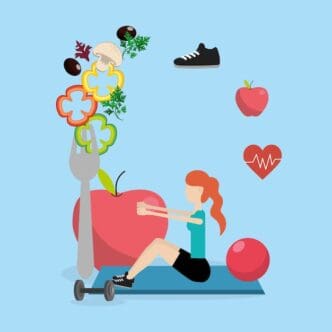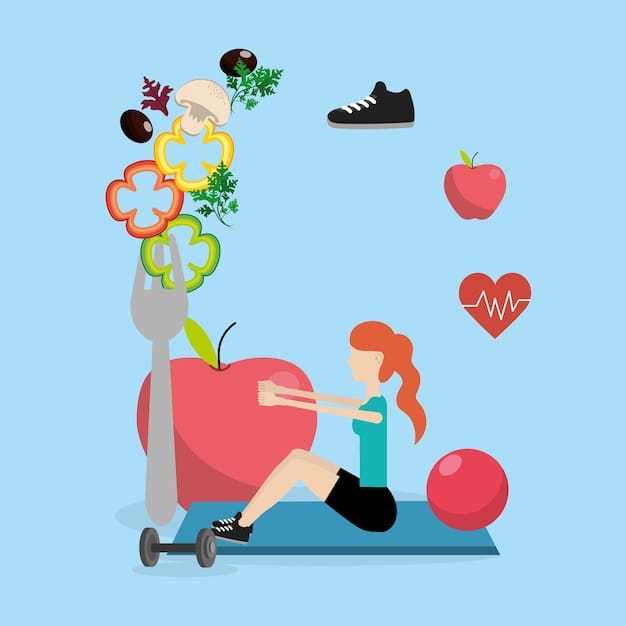What a Healthy Lifestyle Actually Looks Like: A Day in the Life
A truly healthy lifestyle is not a rigid, punishing regimen of extreme diets and grueling workouts, but rather a sustainable tapestry of mindful daily choices. For anyone seeking to improve their well-being, this involves a holistic approach that integrates balanced nutrition, consistent movement, restorative sleep, and proactive stress management into the natural rhythm of their day. From the first glass of water in the morning to the final moment of quiet before sleep, these intentional habits compound over time, ultimately enhancing physical vitality, sharpening mental clarity, and fostering a profound sense of overall wellness that is both achievable and lasting.
The Pillars of a Healthy Day: Beyond the Hype
Before we walk through a “perfect” day, it’s crucial to dismantle the myth that one exists. The ideal of a healthy lifestyle portrayed on social media—often featuring flawless meals and intense, two-hour gym sessions—is not only unrealistic for most but also counterproductive. The goal is not perfection; it’s consistency.
Think of your health as being supported by several core pillars: nutrition, movement, sleep, stress management, and social connection. Each pillar is vital, and they work synergistically. Neglecting one, such as sleep, will inevitably weaken the others, making it harder to eat well or find the energy to exercise.
The “day in the life” outlined below is a template, a collection of evidence-based practices you can adapt to your own schedule, preferences, and needs. It’s a guide to inspire, not a strict rulebook to follow.
The Morning Routine: Setting the Tone for Success
How you begin your day can have a significant ripple effect on your energy, mood, and choices for the next 16 hours. A deliberate morning routine helps you start from a place of control and intention, rather than reaction and chaos.
Hydration First
After six to eight hours of sleep, your body is naturally dehydrated. Before you even think about coffee, your first priority should be water. A large glass of water upon waking helps rehydrate your system, aids digestion, and can help fire up your metabolism.
This simple act flushes out toxins and provides your brain with the water it needs to function optimally. Think of it as an internal shower that prepares your body for the demands of the day.
A Mindful Moment
Resist the powerful urge to grab your smartphone the second you open your eyes. Starting your day by scrolling through emails, news, or social media immediately puts you in a reactive state, flooding your brain with external demands and stressors.
Instead, take just five to ten minutes for a mindful practice. This could be meditation, deep breathing exercises, journaling, or simply sitting quietly with your thoughts and a cup of tea. This practice helps lower cortisol (the primary stress hormone) and sets a calm, focused tone for the day ahead.
A Balanced Breakfast
The purpose of breakfast is to break your overnight fast and refuel your body with the right kind of energy. A breakfast high in refined carbohydrates and sugar (like a sugary cereal or pastry) will lead to a rapid blood sugar spike and an inevitable crash a few hours later.
A truly energizing breakfast is built on a foundation of protein, healthy fats, and fiber. This combination promotes satiety, stabilizes blood sugar, and provides sustained energy. Examples include oatmeal with berries and walnuts, scrambled eggs with avocado on whole-grain toast, or a Greek yogurt bowl with fruit and seeds.
Navigating the Workday: Maintaining Momentum
The period from mid-morning to late afternoon is often where healthy intentions can go awry. Stress, deadlines, and fatigue can trigger cravings for quick-energy fixes like sugar and caffeine, while long periods of sitting can drain your vitality.
The Mid-Morning Check-In
If you feel hunger pangs a few hours after breakfast, a smart snack can bridge the gap to lunch. The key is to choose something that provides nutrients, not just empty calories. A piece of fruit with a handful of nuts, a small container of Greek yogurt, or some vegetable sticks with hummus are excellent choices.
This is also a great time to check in on your hydration. Keep a water bottle on your desk and sip it consistently throughout the morning. Often, feelings of fatigue or hunger are actually signals of mild dehydration.
The Strategic Lunch
Avoid the trap of eating a sad lunch at your desk. Taking a real break to eat mindfully is crucial for both digestion and mental health. It allows your brain to register fullness and gives you a necessary mental reset from work.
Use the “Healthy Plate Model” as a simple visual guide for constructing your meal. Fill half your plate with non-starchy vegetables (like leafy greens, broccoli, or bell peppers), one-quarter with a lean protein source (like chicken, fish, tofu, or beans), and the final quarter with a complex carbohydrate (like quinoa, sweet potato, or brown rice).
Combating the Afternoon Slump
It’s common to feel a dip in energy between 2 and 4 p.m. This is partly due to our natural circadian rhythms. Instead of reaching for a candy bar or a third cup of coffee, combat this slump with movement and hydration.
Get up from your desk and take a brisk five-minute walk, either outside or just around the office. Do some simple stretches to release tension in your neck and shoulders. Drinking a large glass of cold water can also provide a surprising jolt of alertness.
The Evening Wind-Down: Transitioning to Rest
The evening is a critical transition period. How you spend these hours determines not only how you recover from the current day but also how well you prepare for the next. The goal is to shift your body and mind from a state of “doing” to a state of “being.”
Dinner: The Final Fueling
Your evening meal should be nourishing but not overly heavy, as your digestive system slows down at night. The principles of a balanced plate still apply, but you may want to opt for slightly smaller portions than at lunch.
Aim to finish eating at least two to three hours before you plan to go to sleep. This gives your body ample time to digest, preventing issues like acid reflux or discomfort that can interfere with sleep quality.
Active Relaxation
For many, the evening is the only time available for a formal workout, and that’s perfectly fine. Whether it’s a session at the gym, a run, or a fitness class, physical activity is an excellent way to burn off stress from the day.
If you worked out earlier, the evening can be for gentler movement. A leisurely walk after dinner aids digestion and helps clear your mind. A gentle yoga or stretching routine can help release physical tension and signal to your body that it’s time to wind down.
Creating a Sleep Sanctuary
Your pre-sleep routine is arguably as important as your morning routine. An hour before bed, begin to signal to your brain that it’s time for rest. This means dimming the lights and, most importantly, putting away electronic devices.
The blue light emitted from phones, tablets, and computers suppresses the production of melatonin, the hormone that regulates sleep. Instead, engage in relaxing, screen-free activities. Read a physical book, take a warm bath or shower (the subsequent drop in body temperature promotes sleepiness), listen to calming music, or practice light stretching.
The Science of Sleep: The Ultimate Act of Self-Care
Sleep is not a luxury; it is a biological necessity. During sleep, your body undertakes its most critical repair work. Your brain consolidates memories, your cells repair damage, your immune system strengthens, and your body regulates hormones that control appetite and stress.
Most adults need seven to nine hours of quality sleep per night. To achieve this, create an optimal sleep environment: a room that is cool, completely dark, and quiet. Sticking to a consistent sleep schedule—going to bed and waking up around the same time each day, even on weekends—helps regulate your body’s internal clock and improves sleep quality.
The Overarching Principle: Progress, Not Perfection
A healthy lifestyle is not lived in a single, perfect day. It’s built on a foundation of overarching principles that allow for flexibility and humanity.
Embrace the 80/20 Rule
True sustainability comes from balance. The 80/20 rule suggests making mindful, healthy choices 80% of the time, while allowing yourself the flexibility for indulgence and spontaneity the other 20% of the time. This approach prevents feelings of deprivation and burnout, making healthy living a lifelong practice rather than a short-term diet.
Listen to Your Body
Ultimately, you are the foremost expert on your own body. Pay attention to its signals. Some days you’ll have more energy for an intense workout; other days, a gentle walk is what you need. Learn to distinguish between true hunger and emotional cravings. A healthy lifestyle is an intuitive dance between evidence-based guidelines and your own unique biological feedback.
Conclusion: Your Healthy Day, Your Way
A healthy day is a mosaic of small, intentional decisions that accumulate to create a vibrant picture of well-being. It is not about a rigid schedule but about honoring your body with nourishing food, joyful movement, and essential rest. By focusing on consistent, positive actions rather than striving for an unattainable ideal of perfection, you empower yourself to build a lifestyle that not only supports your health but also enriches your life.







